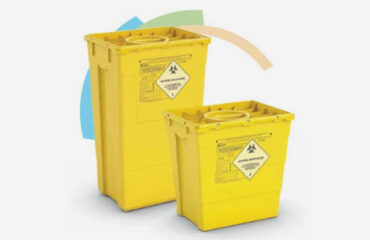Getting The Reclaim Waste To Work
Getting The Reclaim Waste To Work
Blog Article
Rumored Buzz on Reclaim Waste
Table of ContentsHow Reclaim Waste can Save You Time, Stress, and Money.See This Report on Reclaim WasteThe Best Guide To Reclaim WasteThe Buzz on Reclaim WasteExamine This Report about Reclaim Waste
Domestic sewer waste refers to the waste and items from a domestic septic tank. The correct monitoring and disposal of residential sewer waste require fluid waste to be transferred to a sewer treatment plant where the proper methods and tools are applied to cleanse and dispose of waste.
Commercial waste usually includes prospective dangers, such as flammable materials or a combination of liquid and solid waste items, and requires an advanced and thorough disposal process. The disposal of business waste generally involves the purification of waste prior to transport to make certain secure and appropriate disposal. Hazardous waste is created from by-products and overflow of industrial processes and production.
This sort of waste can not use the exact same sewage management transportation or procedures as septic or business liquids. The commercial waste monitoring process requires the evaluation and testing of fluid waste before it undertakes the disposal process (liquid waste removal melbourne). Overflow waste is the liquid waste that originates from drainage and excess stormwater in highly booming locations or cities
Runoff waste can trigger contamination and flooding otherwise managed properly. Discover more concerning drain cleansing and waste administration. Ensuring appropriate waste administration can prevent calamities and lower ecological damage. Both people in property settings and experts in business or production industries can gain from understanding the procedures and regulations of liquid waste monitoring.
Not known Incorrect Statements About Reclaim Waste
Call PROS Services today to learn more about our waste monitoring and disposal services and the appropriate ways to care for the fluid waste you create.
(https://trello.com/w/reclaimwaste1/)Do you know what takes place to your water when you end, flush the commode or drain the washing maker? No? Well, it's worth recognizing. This so-called 'wastewater' is not only a vital resource but, after treatment, will be released to our land, rivers or the ocean. Made use of water from toilets, showers, baths, kitchen sinks, laundries and industrial processes is referred to as wastewater.

water utilized to cool equipment or clean plant and tools). Stormwater, a form of wastewater, is runoff that flows from agricultural and city locations such as roofs, parks, yards, roads, paths and seamless gutters right into stormwater drains pipes, after rain. Stormwater flows neglected directly to local creeks or rivers, eventually reaching the ocean.
Fascination About Reclaim Waste
In Queensland, most wastewater is treated at sewer therapy plants. Wastewater is carried from residential or commercial sites via a system of sewers and pump stations, referred to as sewerage reticulation, to a sewage therapy plant. Neighborhood federal governments construct, preserve and operate most sewage treatment plants. Operators are licensed under the Environmental Security Act 1994 to release treated wastewater at an acceptable environmental standard into rivers.
The Division of Natural Resources advises local federal governments concerning managing, operating and preserving sewerage systems and treatment plants. In unsewered areas, local federal governments might need householders to mount individual or home sewage treatment systems to deal with residential wastewater from toilets, kitchen areas, washrooms and washings. The Division of Natural Resources authorizes using home systems when they are shown to be effective.
Many stormwater obtains no therapy. In some brand-new subdivisions, therapy of some stormwater to get rid of litter, sand and crushed rock has actually started utilizing gross contaminant traps. Wastewater therapy occurs in four stages: Eliminates strong issue. Bigger solids, such as plastics and various other objects wrongly released to drains, are removed when wastewater is passed with screens.
Wastewater then flows right into big tanks where solids clear up and are eliminated as sludge. Oil and scum are skimmed from the surface. Uses tiny living organisms called micro-organisms to break down and get rid of continuing to be liquified wastes and great bits. Micro-organisms and wastes are incorporated in the sludge. Eliminates nitrogen and phosphorus nutrients that can trigger algal blossoms in our rivers and endanger marine life.
Examine This Report about Reclaim Waste
Nutrient removal is not readily available whatsoever sewer treatment plants because it requires costly specialised equipment. check here It is becoming a lot more common in Queensland. Clear liquid effluent created after treatment may still have disease-causing micro-organisms. If this effluent is released into rivers such as rivers or the sea, the micro-organisms will eventually die out.

Most wastewater moves right into the sewerage system. Under the Act, neighborhood federal governments carry out approvals and licences for ecologically appropriate tasks (Periods) entailing wastewater launches that could have a regional impact.
Our Reclaim Waste PDFs
Tracking gives factual details concerning water top quality and can validate that permit conditions are being met. The information obtained through surveillance offers the basis for making water quality decisions.
Report this page